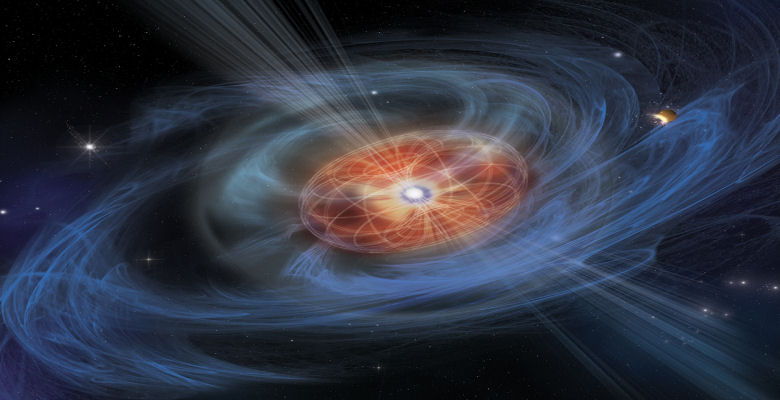Massive star discoveries

A team of international scientists including academics from LJMU’s Astrophysics Research Institute (ARI) and the Max-Planck Institute for Extraterrestrial Physics, have uncovered important research about the evolution of the energies of the Universe.
They discovered that there is a link between ultra-long Gamma Ray Bursts (extremely energetic explosions that have been observed in distant galaxies) and superluminous supernovae, a class of very luminous stellar explosions.
A supernova is a stellar explosion that briefly outshines an entire galaxy, radiating as much energy as the Sun or any ordinary star is expected to emit over its entire life span, before fading from view over several weeks or months.
The results published in Nature , tell us that massive stars may collapse to Neutron stars (not only to Black Holes) and that these events are likely to be at the origin of both Long Gamma Ray Bursts (GRBs) and the accompanying supernovae ("Hypernovae") and of Ultra-long GRBs and SuperLuminous Supernovae. These are both the result of the birth of a Magnetar, a type of neutron star with an extremely powerful magnetic field.
It was originally thought that these two classes of events were completely distinct, the former the signature of the birth of a black hole, while the nature of the latter was debated, magnetar powering being just one of many competing theories.
Professor Paolo Mazzali from the ARI explained:
“This discovery confirms that magnetars play a very important role in the evolution of very massive stars, which means that stars which we thought would collapse to black holes collapse to neutron stars instead, and that much of the energy of the SNe that accompany GRBs may be due to Magnetars.
“Magnetars may be responsible for both GRBs and ULGRBs. It makes physical sense that magnetars can release their energy over a long period (hence the ultra-long GRB).
“We knew that long (several seconds to 100 sec or so) GRBs are linked to the death of massive, stripped stars (hypernovae), but we did not know the origin of Ultra-long versions (100's of sec or more, even hours sometimes). ”
The paper 'A very luminous magnetar-powered supernova associated with an ultra-long gamma-ray burst' is in Nature and available at http://www.nature.com/nature/journal/v523/n7559/full/nature14579.html


